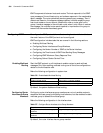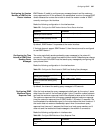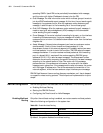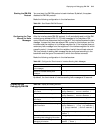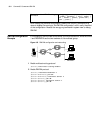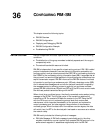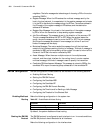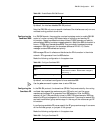
35
CONFIGURING PIM-DM
This chapter covers the following topics:
■ PIM-DM Overview
■ PIM-DM Configuration
■ Displaying and Debugging PIM-DM
■ PIM-DM Configuration Example
PIM-DM Overview Protocol Independent Multicast--Dense Mode (PIM-DM) is applicable to the
following conditions:
■ The transmitter and the receiver are close to each other, and there are a large
number of multicast group receiving members in the network.
■ Multicast packet traffic is large.
■ Multicast packet traffic is continuous.
PIM-DM constructs a multicast distribution tree from the source PIM router to all
the other nodes employing unicast routing table. When sending a multicast
packet, PIM-DM assumes that all the hosts in the network are ready for receiving
the multicast packet. The multicast source begins distributing multicast packets to
the downstream nodes of the network. The nodes without multicast group
members will send prune message to the upstream router and inform it that there
is no need for it to distribute data to the downstream nodes any more. When new
members appear in the prune area, PIM-DM sends graft message to enable the
pruned path to restore to distribution status. This mechanism is called
broadcast-prune process.
The PIM-DM broadcast-prune mechanism continues periodically. PIM-DM adopts
reverse path forwarding (RPF) technology in the broadcast-prune process. When a
multicast packet arrives, the router first judges the correctness of the arriving path.
If the arriving port is the one directed to the multicast source according to the
unicast routing instruction, the multicast packet is considered to be from the
correct path. Otherwise, the multicast packet will be considered a redundant
packet and will be discarded.
PIM-DM includes the following kinds of messages:
■ PIM Hello Message: PIM hello message is periodically sent neighbor interface in
the same network segment to establish a relationship with the PIM-DM
neighbors by the router interface operating the PIM-DM protocol. In addition, a
designed router (DR) is required, in the IGMPv1, to send a host-query message.
Meanwhile, the hello message takes charge of choosing a DR for the router






